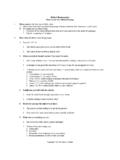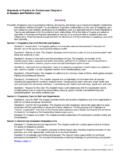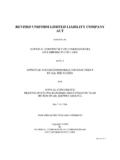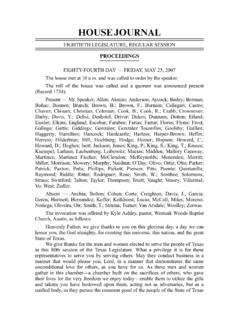Transcription of Basics of Biblical Interpretation - Balboa Software
1 Copyright 2010 Dr. Harry A. HahneBasics of Biblical InterpretationRecommended reading:Fee, Gordon D. and Douglas Stuart. How to Read the Bible for all its Worth. Third edition. Grand Rapids,MI.: Zondervan, 2003. Fee, Gordon. New Testament Exegesis. Revised Edition. Louisville, KY: Westminster/John Knox, , William W., Craig L. Blomberg and Robert L. Hubbard, Jr. Introduction to Biblical ed. Dallas: Nelson, , Grant R. The Hermeneutical Spiral. A Comprehensive Introduction to Biblical Grove, IL: InterVarsity Press, goals of what the author meant by the words which he used. The correct Interpretation of apassage is always consistent with what the original author was communicating to the original the timeless principles taught by the passage. These principles are valid in any period ofhistory and any culture. Principles bridge the gap between Interpretation and grammatical-historical method of Definition: A method of Interpretation which seeks the single meaning intended by the author byconsidering the normal way that words were used in the author's day, the customary rules of grammar andthe facts of history and culture in which the text was Other names:1.
2 "Normal" method: The normal way that people read any literature. Interpret the Bible like anyother "Literal" interpretationa. "Literal" does not mean that there are no figures of speech or that the Bible is interpretedliteralistically or Webster's dictionary definition of "literal": "the natural or usual construction or implication of the ordinary and apparent sense of words"C. word and statement has a single meaning that is determined by what the author intends it tomean in a given context. The meaning does not change for different correct meaning is one that the original readers could have The "plain meaning" ofthe text is from the perspective of the original audience, culture and language, not necessarily for themodern culture and not allegorize to find a deeper, spiritual meaning behind the historical author may use figures of speech and symbols as part of the normal method of writing.
3 Consistently with the literary type (genre) used by the author. Each genre has conventionsthat determine how meaning is communicated in that genre. important : Careful study of the text to determine the original, intended meaning. Comes from the Greekword meaning to "lead out", the goal is to draw the meaning out of the is eisegesis, reading an idea into a passage (Greek, meaning "lead into"). is best done with the text in the original language, but it can be done with careful methodsusing literal translations, provided that good secondary tools are consulted at critical Interpretation Page exegesis is both a science and an art:a. Science: it requires careful methodologies, which must be rigorously appliedb. Art: it requires sensitivity to the nuances of language and good judgment, which comes Usage: The science of Interpretation .
4 The goal was to determine rules of Interpretation toarrive at the correct meaning of a text. There is only one correct meaning, the author's Hermeneutics: rules of Interpretation applicable to all kinds of Hermeneutics: rules of Interpretation of figurative language and non-literal genres suchas poetry, prophecy and New Hermeneutic: A philosophical description of the process by which a person comes tounderstand a text. a. It developed out of Heidegger s philosophy of language and was developed further by Gadamer,Bultmann and others from 1930-1960. It has become widely accepted in literary There is no such thing as true objectivity in understanding a text, because all readers come withassumptions, or preunderstandings, which affect their Interpretation of the There is no correct Interpretation of a text, only many different and equally valid interpretationsby different Although the New Hermeneutic has generally given us a better understanding of the process ofunderstanding a text, its relativistic assumptions are unacceptable.
5 (1) It is rooted in the view that there are no absolute truths.(2) It results in a subjectivity in which anyone's Interpretation is acceptable.(3) There are no controls over The New Hermeneutic moves too quickly to application, seeking personal and contemporarymeaning which is not based on the meaning the original author intended. It is rooted inexistentialism, so it validly seeks the significance of the Biblical text for one's own life. But thissignificance is rooted in one's own experience and perspectives more than in the text The classic literary critical defense of the centrality of the author's meaning is E. D. Hirsch,Validity in Interpretation . He argues that the author's intent is the primary goal of interpretationand we then can move on to examine the significance of the meaning for ourselves. g. For an evangelical response, see Klein, Blomberg & Hubbard, Biblical Interpretation , ch.
6 1, 4and Osborne, The Hermenutical Spiral, appendices 1 and 2. Osborne shows us what we can learnfrom this approach and suggests revisions from an evangelical Bible Bible Study seeks to discover the author's intended meaning in a passage by examining thedetails of a passage within the study begins with an idea and tries to find support for it in Scripture. It runs the risk oftwisting Scripture to fit your ideas ( proof texting ), rather than letting your ideas be shaped by the Three basic steps in Bible study: Observation, Interpretation , : "what does it say?"a. Simply list the facts without trying to understand what they Record as many details as you can. You never know what will be an important clue to Interpretation Page 3c. Write it down. This forces you to focus more. You also can reexamine the details later when youinterpret the The more careful you are in observation the more likely your Interpretation will be Too many people leap to Interpretation or application before they have gathered all the facts.
7 This can lead to interpretive : "what does it mean?"a. What is the author trying to communicate with the words he chose? The only correctinterpretation is the author's intended meaningb. Interpretation finds what the passage meant for the original readers as well as timeless principlesimplied by the We determine the correct Interpretation from the details we observe in the : "How does this relate to our contemporary culture and to my life?"a. How should our culture, society, church, racial group, etc. implement the teachings of thispassage?b. How should my attitudes, behavior and beliefs be changed as a result of the truths this passageteaches?c. There is only one correct Interpretation of a statement, but there are many applications.(1) Eph 5:20: Interpretation : Christians should always thank God for what happens in theirlives. Applications: Thank God for losing a job or receiving an unexpected source of moneyfor process is how the mind naturally works, although we normally move from step to step withoutbeing conscious of the process.
8 By taking the discipline to slow up these natural steps andmethodically take one step at a time, it is easier to avoid jumping to unwarranted conclusions. It alsohelps you understand why you believe a certain Illustrations of the inductive method: doctor diagnosing a stomach ache. 18:1 (NASB): "Now he was telling them a parable to show that at all times they ought to prayand not to lose heart"a. Observations: (1) Jesus desires people always to pray.(2) He used a parable to teach this.(3) Jesus wants people to not "lose heart" in Interpretations:(1) To not lose heart means not to get discouraged.(2) One might be tempted to get discouraged and give up in prayer when answers to prayer donot come as quickly as we would like.(3) This seems to imply perseverance. Keep asking God, even when answers do not Application:(1) My brother is not a Christian.
9 I need to keep praying with perseverance for his salvation andnot be discouraged because he seems to reject the methodological steps of Biblical Follow these basic steps to arrive at the interpretive your interpretive questions and justify your the timeless principles implied by the Interpretation Page interpretive right questions identify the important issues to questions flow from your observations. As you observe details, you should naturallywant to know their : 1 Thess. 1:4-5a. What is the significance of the connective "for"?b. What does it mean "he has chosen you"? Are others chosen or only the original readers?c. What is the "gospel"?d. How did the gospel come to them?e. Why does he say "our" gospel? Are there other gospels? Did Paul's gospel differ from the otherapostles?f. What is the significance of the connective "because"?
10 G. What did he mean by "power" and how was it shown?h. How would a person bring the gospel "simply with words"? Why did Paul not do this?i. How does the Holy Spirit relate to the "power" and "deep conviction" and the spread of thegospel?j. How did they live among the Thessalonians?k. What does he mean by "for your sake"? your interpretive questions and justify your your interpretations. Your goal is not simply to know what the passage means but also whythat is the correct Interpretation . this possible interpretations.(1) For complex questions, brainstorm several different interpretations. (2) Brainstorming possible interpretations helps you get outside your normal ways of thinking tolook at things in new ways. the strengths and weaknesses of each proposed the Interpretation which has the strongest support from the your Interpretation .










